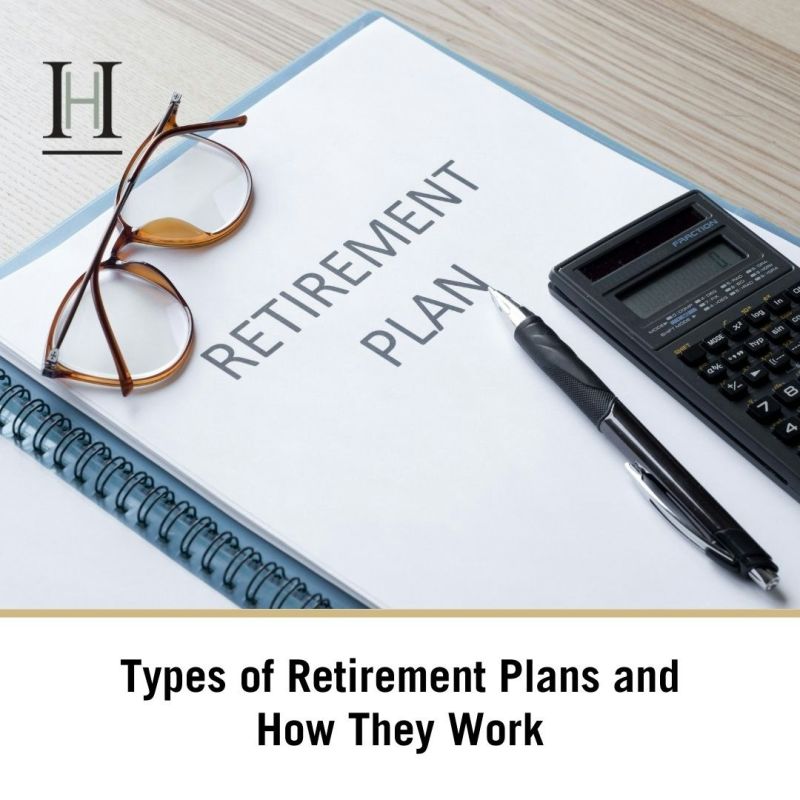By Vincent Birardi, CFP®, AIF®
In the United States, savers have a robust array of options to save for their future retirement. Odds are you may be feeling a bit overwhelmed making sense of the many ways to save for the future. This article should help you sort out the types of retirement plans and what could work best for you.
At the highest order, there are two main categories of retirement plans: employer-sponsored and individual. This article will focus on the 6 most-often utilized plans: 401(k), 403(b), Profit-Sharing, IRA, SEP-IRA & Roth IRA.
What is a 401(k) Retirement Plan?
A 401(k) is a feature of a qualified, employer-sponsored profit-sharing plan that allows employees to contribute a portion of their wages periodically (typically once or twice each month) to individual accounts. Elective salary deferrals are excluded from the employee’s taxable income (except for designated Roth deferrals).
Employers can also contribute to employees’ accounts – typically known as a “company match.” Distributions, including earnings, are includible in taxable income at retirement (except for qualified distributions of designated Roth accounts). The maximum annual employee contribution in 2024 is $23,000. If you are age 50 or older, you can contribute an additional $7,500 this year.
What is a 403(b) Retirement Plan?
A 403(b) plan (also called a tax-sheltered annuity or TSA plan) is a retirement plan offered by public schools and certain 501(c)(3) tax-exempt organizations. Functionally, it shares many features with a 401(k) plan. Employees can save for retirement by contributing to individual accounts while their employers can also contribute to their employees’ accounts.
The maximum annual employee 403(b) contribution in 2024 is also $23,000. If you are age 50 or older, you may contribute an additional $7,500 this year as a “catch-up” provision. And may make an additional $3,000 contribution if you have at least 15 years of service with your employer.
What is a Profit-Sharing Retirement Plan?
A profit-sharing plan accepts discretionary employer contributions only. There is no set amount that the law requires an employer to contribute. Also, the employer’s business does not need profits to make contributions to a profit-sharing plan. A profit-sharing plan can also be combined within a 401(k) or 403(b) plan. The 2024 contribution limit is $69,000.
The three remaining plans we’re focusing on are not employer-sponsored but rather are varieties of individual retirement accounts.
What is a Traditional IRA?
A Traditional IRA (shorthand for Individual Retirement Account) is a tax-deferred retirement savings account. No taxes are assessed during your pre-retirement years on either the portion of your income you invest or on the additional value your investments gain during those years.
You will, however, most likely have taxes on your withdrawals in retirement. Those withdrawals can begin without penalty as early as 59 ½ and must begin no later than your Required Minimum Distribution age (currently either 73 or 75 based on your birth year.) The maximum contribution this year is $7,000; you may contribute an additional $1,000 if you’re 50 or older.
What is a SEP-IRA?
A SEP-IRA (Simplified Employee Pension IRA) is also a tax-deferred retirement savings account set up by business owners or self-employed individuals for themselves and any employees. The taxation rules are the same as those for a Traditional IRA. The maximum contribution this year is the lesser of 25% of the business owner’s total compensation or $69,000. No catch-up provisions are allowed.
What is a Roth IRA?
Lastly, a Roth IRA is a tax-free retirement savings account. Annual contribution limits are the same as those of a Traditional IRA however they’re made with earned income that has already been taxed.
Retirement Planning with a CERTIFIED FINANCIAL PLANNER™ Professional
Working with a CERTIFIED FINANCIAL PLANNER™ professional can Assist you in identifying the appropriate retirement account type(s) to utilize and help you develop a long-term contribution and investment plan aimed at helping you achieve your retirement goals.
Explore Halbert Hargrove’s retirement planning services.
Disclosure:
Halbert Hargrove Global Advisors, LLC (“HH”) is an SEC registered investment adviser located in Long Beach, California. Registration does not imply a certain level of skill or training. Additional information about HH, including our registration status, fees, and services can be found at www.halberthargrove.com. This blog is provided for informational purposes only and should not be construed as personalized investment advice. It should not be construed as a solicitation to offer personal securities transactions or provide personalized investment advice. The information provided does not constitute any legal, tax or accounting advice. We recommend that you seek the advice of a qualified attorney and accountant. All opinions or views reflect the judgment of the author as of the publication date and are subject to change without notice. All information presented herein is considered to be accurate at the time of writing, but no warranty of accuracy is given and no liability in respect of any error or omission is accepted.


